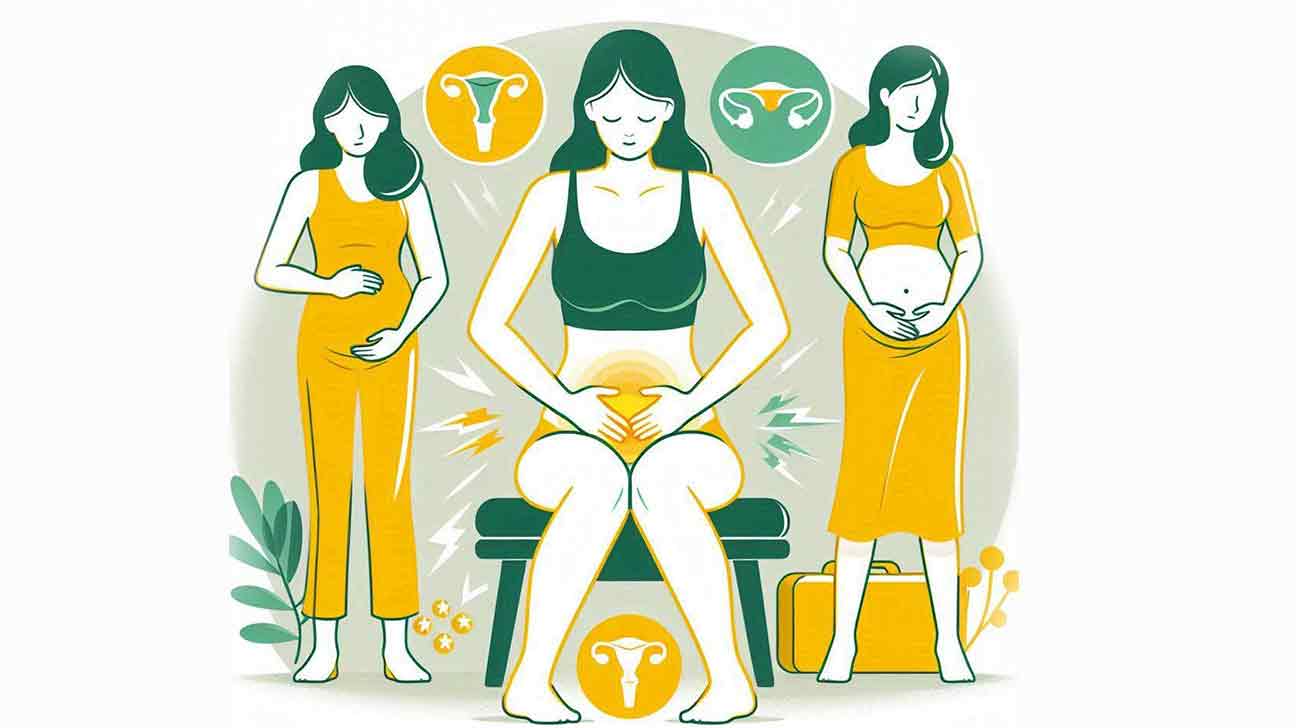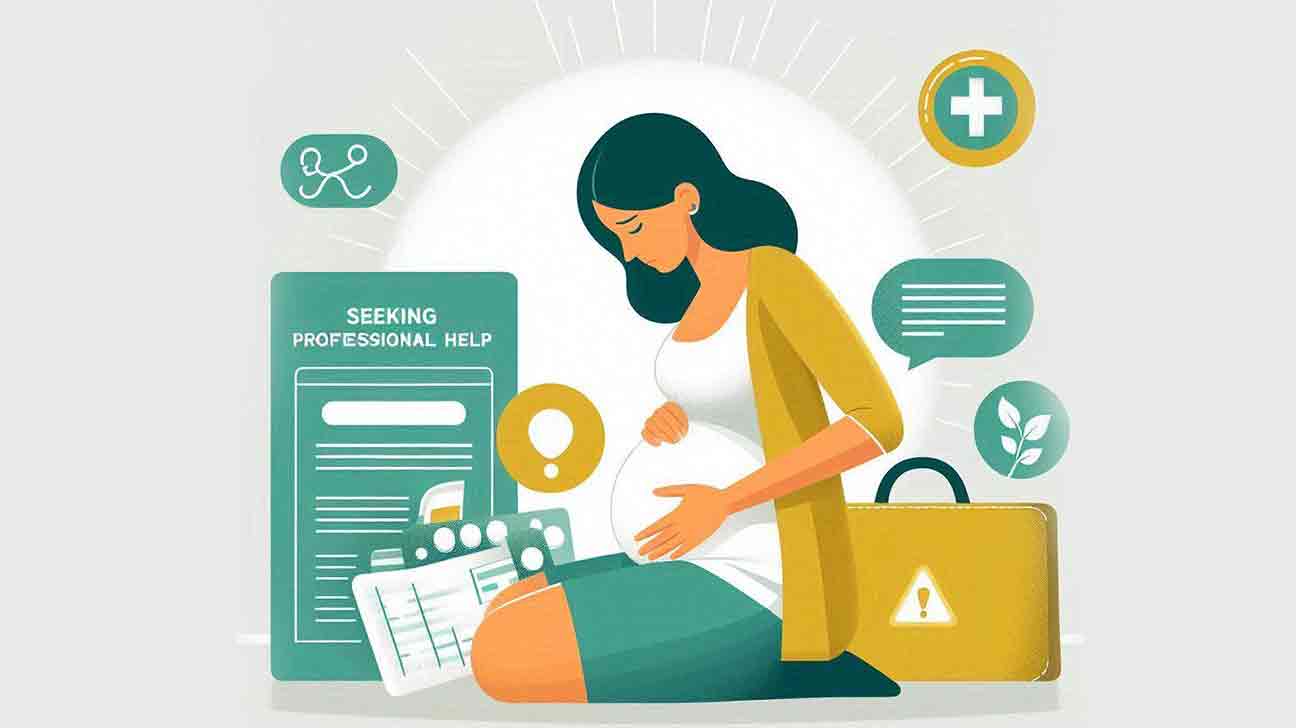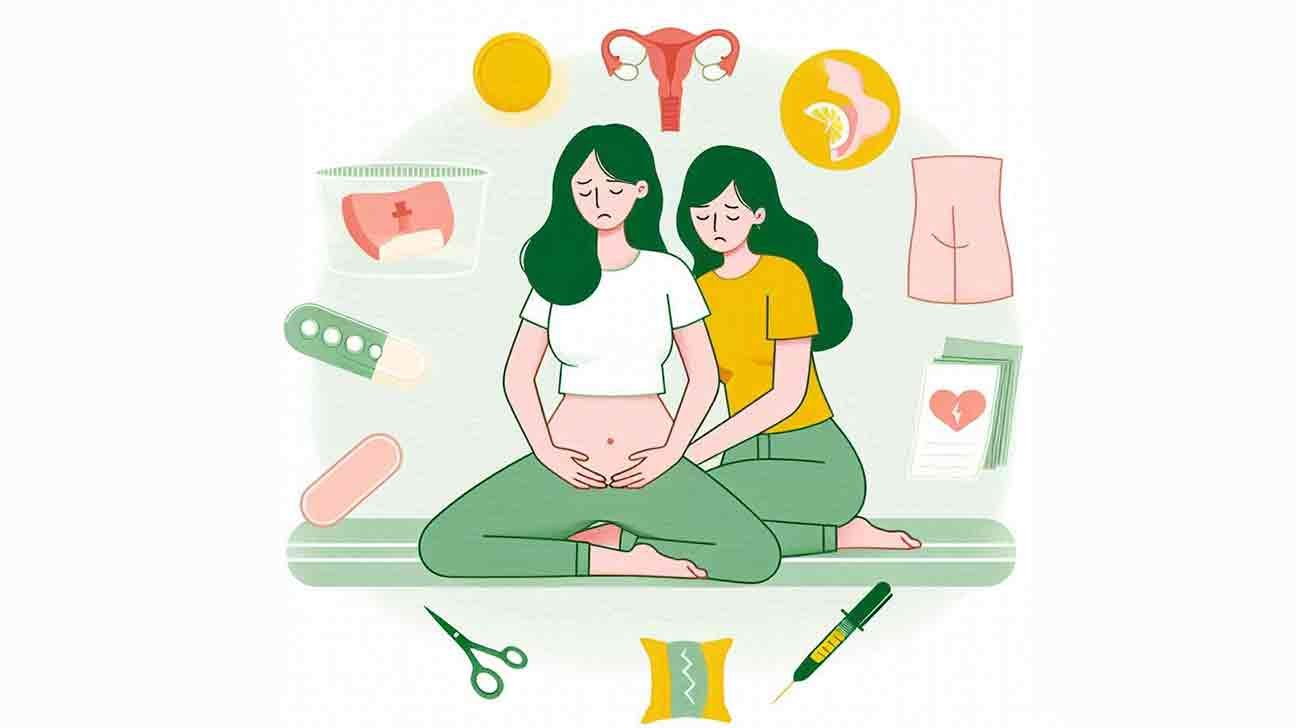
To relieve pelvic pain during pregnancy, consider pelvic physiotherapy, avoiding heavy lifting, exercising, massages, and using pain relievers. Pelvic support belts or crutches, chiropractic care, water exercises, and practicing Kegel exercises can also help alleviate pain.
Experiencing pelvic pain during pregnancy can be challenging, affecting your daily activities and overall well-being. Seeking proper methods to manage this pain is crucial for your comfort and health. By incorporating various techniques like physiotherapy, exercise, and supportive devices, you can potentially reduce pelvic discomfort and improve your quality of life during this special time.
Remember, always consult with your healthcare provider before trying any new methods to ensure they are safe for you and your baby.
How to Relieve Pelvic Pain During Pregnancy?
Understanding Pelvic Pain During Pregnancy
Pelvic pain during pregnancy is a common discomfort experienced by many expectant mothers. It can range from mild to severe and may have a significant impact on daily life. Understanding the causes and effects of this condition is crucial for finding relief and ensuring a healthier pregnancy.
Common Causes
- Pubic symphysis dysfunction
- Round ligament pain
- Sacroiliac joint pain
- Increased pressure on pelvic organs
Impact On Daily Life
Pelvic pain can affect everyday activities such as walking, standing, and sleeping. It may lead to decreased mobility and discomfort during routine tasks. Managing this pain is essential for overall well-being and a smoother pregnancy journey.
Maintaining Proper Posture
To relieve pelvic pain during pregnancy, maintaining proper posture is crucial. Keep your back straight, shoulders relaxed, and distribute weight evenly. This can help alleviate strain on the pelvis and reduce discomfort throughout the day. Remember to take frequent breaks and adjust positions regularly for optimal relief.
Maintaining Proper Posture During pregnancy, maintaining proper posture is crucial in relieving pelvic pain and discomfort. Good posture can alleviate strain on the pelvic area, reduce pain, and support the growing baby. Additionally, it can help prevent long-term back problems that often accompany poor posture during pregnancy. Benefits of Good Posture Good posture during pregnancy offers numerous benefits, including reducing strain on the lower back and hips, alleviating pressure on the pelvic area, and supporting the body’s natural alignment. By maintaining proper posture, expecting mothers can improve their overall comfort and mobility, leading to a more enjoyable and pain-free pregnancy. “`html
Benefits Of Good Posture
“` Tips for Maintaining Proper Posture To maintain proper posture during pregnancy, consider the following tips: 1. Stand Tall: Ensure your shoulders are relaxed, and your back is straight with your weight evenly distributed between both feet. 2. Use Supportive Chairs: When sitting, choose chairs with good lumbar support and maintain a straight back, avoiding slouching or leaning forward. 3. Engage Core Muscles: Strengthening the core muscles can help support the growing belly and improve overall posture. 4. Avoid Crossing Legs: Crossing the legs can destabilize the pelvis, contributing to pelvic pain. Instead, keep the feet parallel and evenly spaced. 5. Use a Pregnancy Pillow: Utilize a pregnancy pillow to support the back, hips, and abdomen while sleeping to maintain proper spinal alignment. 6. Take Regular Breaks: If sitting for extended periods, take frequent breaks to stretch and change positions, preventing stiffness and discomfort. “`html
Tips For Maintaining Proper Posture
By maintaining proper posture during pregnancy, women can significantly reduce pelvic pain, minimize discomfort, and improve overall well-being. Following these tips can contribute to a more comfortable and enjoyable pregnancy experience.
Exercising For Pelvic Pain Relief
Exercising for Pelvic Pain Relief:
Safe Exercises During Pregnancy
Pelvic pain during pregnancy?
Engage in safe exercises to relieve discomfort.
Pelvic Floor Strengthening
Strengthening your pelvic floor muscles is crucial.
Using Supportive Equipment
Pregnancy can bring about discomfort and pain, particularly in the pelvic area. Thankfully, there are various supportive equipment options that can help alleviate these symptoms. By using maternity belts and pregnancy pillows, you can find relief and improve your overall comfort during this special time.
Maternity Belts
Maternity belts are specifically designed to provide support to your growing belly and alleviate pelvic pain. These belts are adjustable and can be worn around your lower back and abdomen, offering gentle compression and stability. By redistributing the weight of your baby bump, a maternity belt can help relieve pressure on your pelvic area and reduce discomfort.
Pregnancy Pillows
Pregnancy pillows are specially designed to support your body during sleep or rest. These pillows come in various shapes and sizes, such as C-shaped, U-shaped, or wedge pillows. They help to align your body and provide support to your belly, back, hips, and legs. By using a pregnancy pillow, you can find a comfortable position that reduces pelvic pain and improves your quality of sleep.
When using a maternity belt or pregnancy pillow, it’s important to choose the right size and position it correctly for the best results. Consult with your healthcare provider or a prenatal physiotherapist to ensure you are using these supportive equipment options correctly and effectively.
Applying Heat And Cold Therapy
When it comes to relieving pelvic pain during pregnancy, applying heat and cold therapy can be highly effective. Both heat and cold therapy have their own unique benefits that can help alleviate discomfort and reduce inflammation in the pelvic area. In this section, we will explore the benefits of heat therapy and cold therapy and how you can incorporate them into your pregnancy routine.
Benefits Of Heat Therapy
Heat therapy is a simple and natural way to soothe pelvic pain and promote relaxation. When applied to the affected area, heat increases blood flow and helps relax tense muscles, providing relief from discomfort. Here are some key benefits of heat therapy:
- Pain Relief: Applying heat to the lower back and hip area can help ease pelvic pain and provide temporary relief from discomfort.
- Inflammation Reduction: Heat therapy helps reduce inflammation in the pelvic area, which can be a common cause of pain during pregnancy.
- Muscle Relaxation: The warmth from heat therapy helps relax tight muscles, offering a sense of relief and relaxation.
- Improved Blood Circulation: Heat increases blood flow to the pelvic area, delivering much-needed nutrients and oxygen to the muscles and tissues.
Benefits Of Cold Therapy
Cold therapy can be an effective way to manage pelvic pain during pregnancy, especially when caused by inflammation or swelling. Applying cold to the affected area can help numb the pain and reduce swelling. Here are some benefits of cold therapy:
- Pain Reduction: Cold therapy can provide immediate relief from pelvic pain by numbing the area and dulling the sensation of discomfort.
- Inflammation Reduction: By constricting blood vessels, cold therapy helps reduce swelling and inflammation in the pelvic area.
- Local Anesthetic Effect: The numbing effect of cold therapy can temporarily block pain signals from reaching the brain, offering a soothing sensation.
- Quick Relief: Cold therapy works rapidly, providing instant relief and helping you manage pelvic pain during pregnancy more effectively.
Now that you are aware of the benefits of both heat therapy and cold therapy, you can choose the one that suits you best or alternate between the two for maximum relief. Remember to always consult with your healthcare provider before trying any new therapies or techniques during pregnancy.
Seeking Professional Help
When pelvic pain during pregnancy becomes unmanageable, seeking professional help is crucial. Various healthcare providers specialize in relieving pelvic pain and can offer tailored solutions to alleviate discomfort.
Physical Therapy Options
Physical therapy plays a significant role in addressing pelvic pain during pregnancy. A trained therapist can guide you through exercises that strengthen supporting muscles and improve flexibility.
Chiropractic Care
Chiropractic care focuses on aligning the spine and pelvis to alleviate pressure contributing to pelvic pain. Through gentle adjustments, a chiropractor can help improve your overall comfort.
Utilizing Relaxation Techniques
Utilizing Relaxation Techniques during pregnancy can be a game-changer for relieving pelvic pain. These techniques not only help you relax but also promote better physical and mental well-being. Here are three effective relaxation techniques you can incorporate into your routine:
Prenatal Yoga
Prenatal yoga is a gentle and safe form of exercise that focuses on flexibility, strength, and relaxation. It offers various poses and movements specifically designed for pregnant women, targeting areas such as the hips, lower back, and pelvis. Practicing prenatal yoga can help alleviate pelvic pain by improving blood circulation, reducing muscle tension, and promoting overall relaxation. It also provides an opportunity to connect with your body and prepare for labor.
Breathing Exercises
Breathing exercises are a simple yet powerful way to alleviate pelvic pain and promote relaxation during pregnancy. Deep breathing techniques, such as diaphragmatic breathing or belly breathing, help activate the relaxation response in your body, reducing stress and tension. By focusing on your breath and taking slow, deep inhales and exhales, you can release muscle tension, increase oxygen flow to your pelvic area, and reduce discomfort. Incorporate these breathing exercises into your daily routine, especially during moments of pain or discomfort.
Visualization
Visualization is a relaxation technique that involves using your imagination to create a calming and soothing mental image. During pregnancy, visualizing your pelvic area as relaxed and pain-free can have a profound effect on reducing discomfort. Find a quiet and comfortable space, close your eyes, and imagine your pelvic muscles releasing tension and becoming loose and relaxed. You can also visualize warm, healing energy flowing through your pelvis, promoting comfort and well-being. Practice this technique regularly to train your mind to respond positively to pelvic pain.
Making Dietary And Lifestyle Adjustments
To relieve pelvic pain during pregnancy, making dietary and lifestyle adjustments can be beneficial. Consider avoiding heavy lifting, engaging in gentle exercises, utilizing pelvic support belts or crutches, and seeking chiropractic care. Additionally, practicing Kegel exercises and receiving massages can help alleviate discomfort during this time.
Dietary Considerations
Making appropriate dietary adjustments can help alleviate pelvic pain during pregnancy. It is crucial to consume foods rich in anti-inflammatory properties, such as omega-3 fatty acids found in fish and flaxseeds. Additionally, ensure you are adequately hydrated by drinking plenty of water throughout the day.
Activity Modifications
During pregnancy, it is essential to modify your physical activities to reduce pelvic pain. Avoid activities that put excessive strain on the pelvis, such as heavy lifting. Instead, opt for gentle exercises like walking or swimming to maintain strength and flexibility.
Dietary Considerations
- Include foods rich in omega-3 fatty acids
- Stay hydrated by drinking plenty of water
Activity Modifications
- Avoid heavy lifting that strains the pelvis
- Engage in gentle exercises like walking or swimming
Frequently Asked Questions Of How To Relieve Pelvic Pain During Pregnancy
When Should I Be Concerned About Pelvic Pain During Pregnancy?
If you experience severe and lasting pelvic pain during pregnancy, consult your gynecologist. Look out for sharp or dull aches and abdominal sensitivity. Seek medical attention if the pain is accompanied by abnormal bleeding or discharge.
What Helps Pelvic Girdle Pain During Pregnancy?
To relieve pelvic girdle pain during pregnancy, stay active, rest, wear supportive shoes, distribute weight evenly, and practice proper sitting and sleeping positions with additional pillow support.
Can Barely Walk Due To Pelvic Pain During Pregnancy?
Pelvic girdle pain during pregnancy can make walking difficult. To relieve the pain, try pelvic physiotherapy, avoid heavy lifting, exercise, massage, use pain relievers, wear a pelvic support belt, or use crutches. Chiropractic care and water exercise can also help.
If the pain is severe and lasts, consult your gynecologist.
Does A Bath Help Pelvic Pain Pregnancy?
Yes, taking a warm bath can help relieve pelvic pain during pregnancy by soothing and relaxing your muscles.
Conclusion
Pelvic pain during pregnancy can be challenging, but with the right techniques, relief is possible. From pelvic physiotherapy to gentle exercises, there are various methods to ease discomfort. Remember to consult your healthcare provider for severe or persistent pain. Stay active, rest, and prioritize your comfort throughout this journey.






